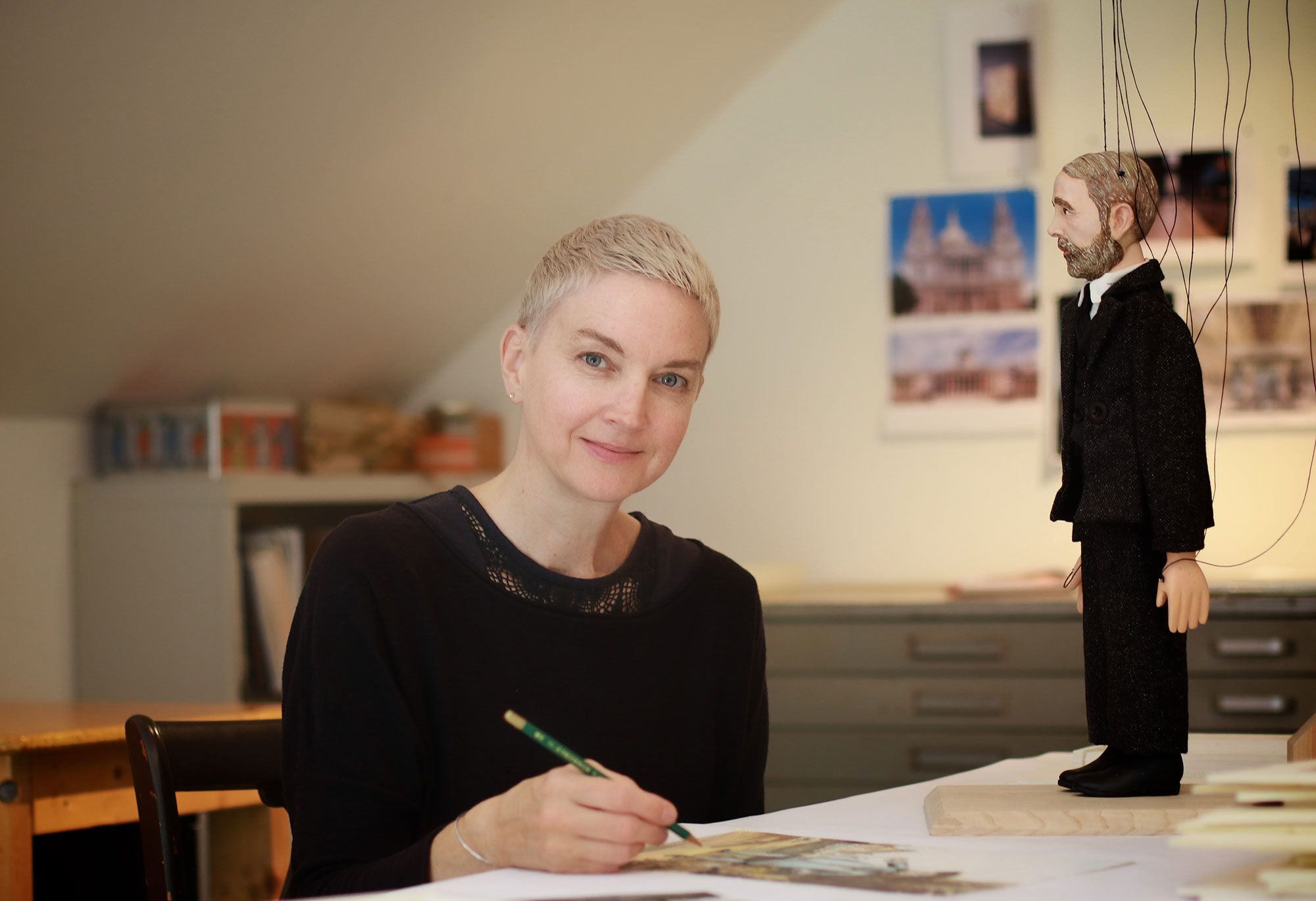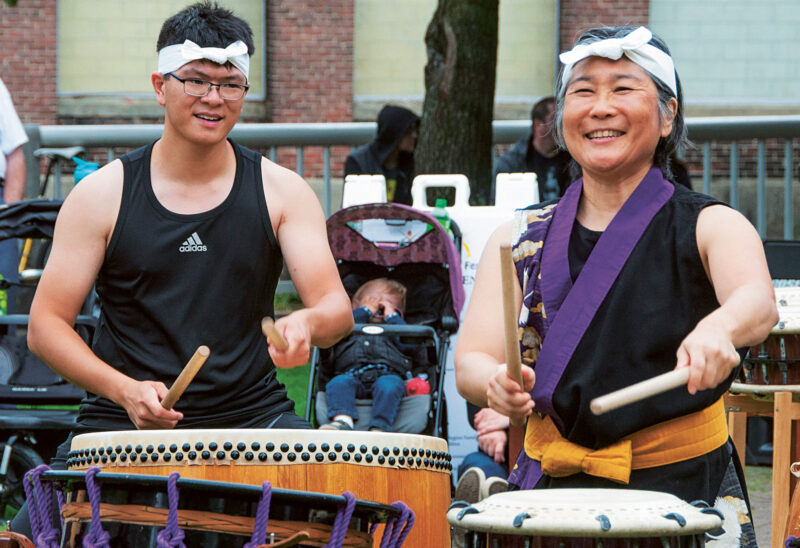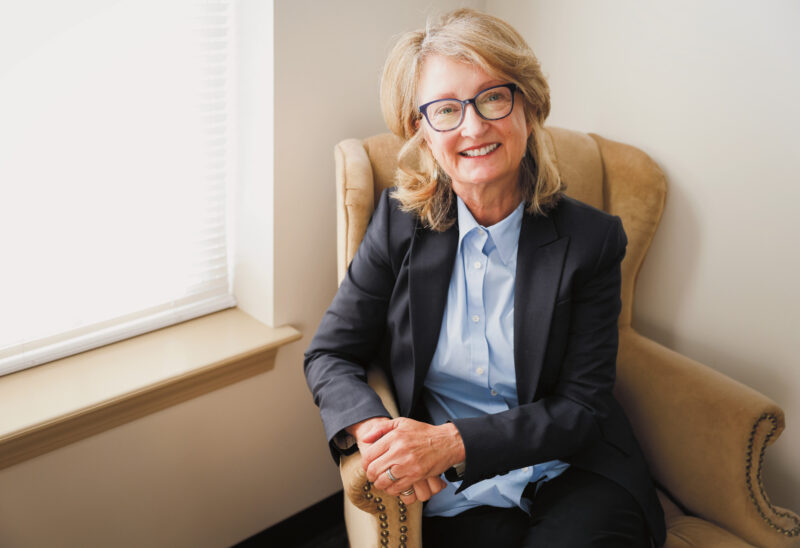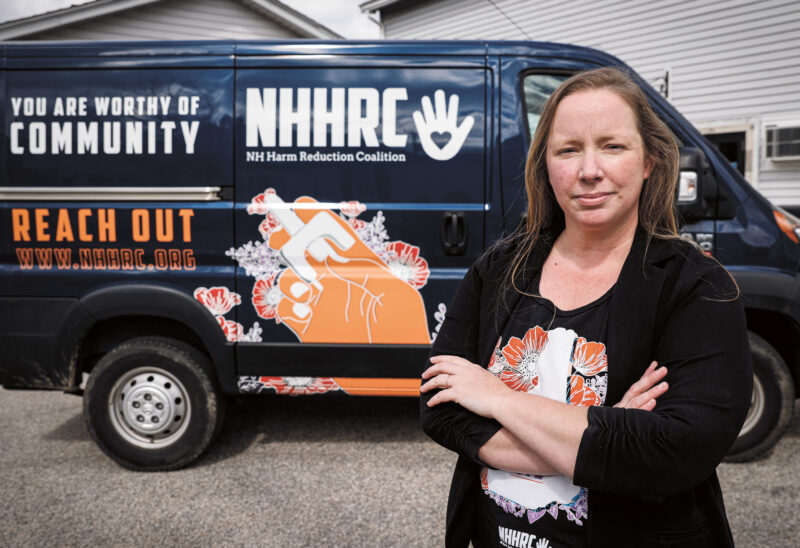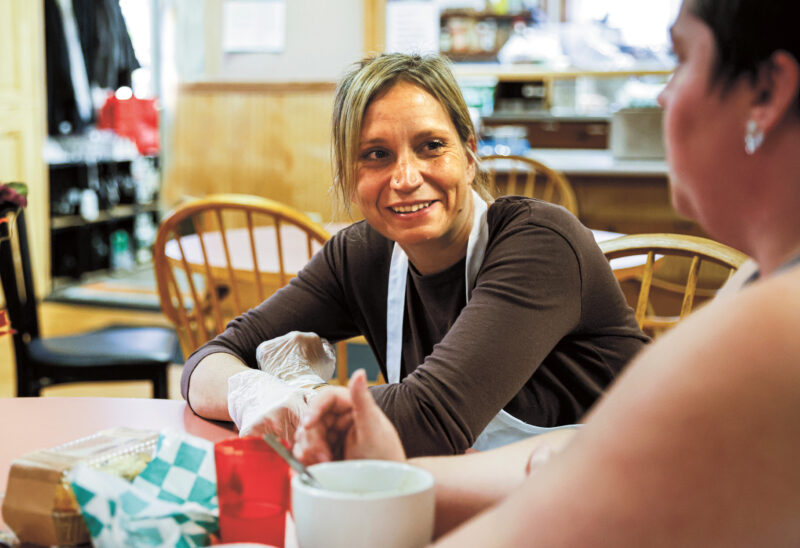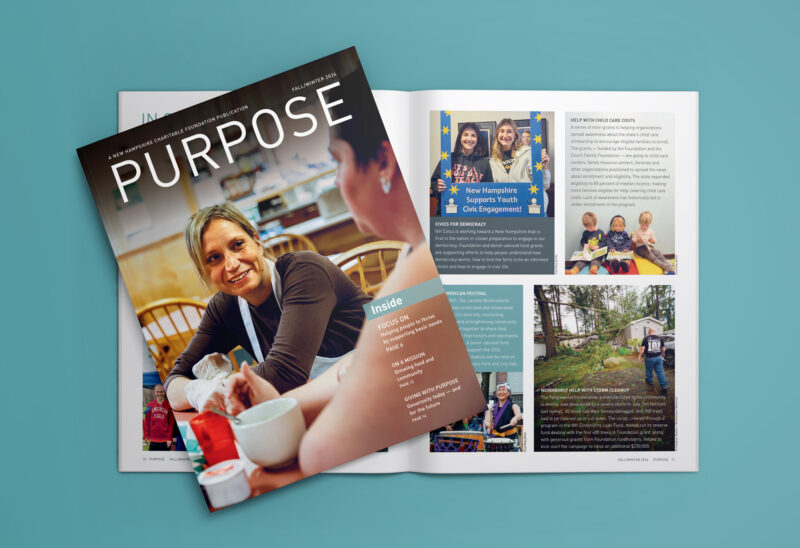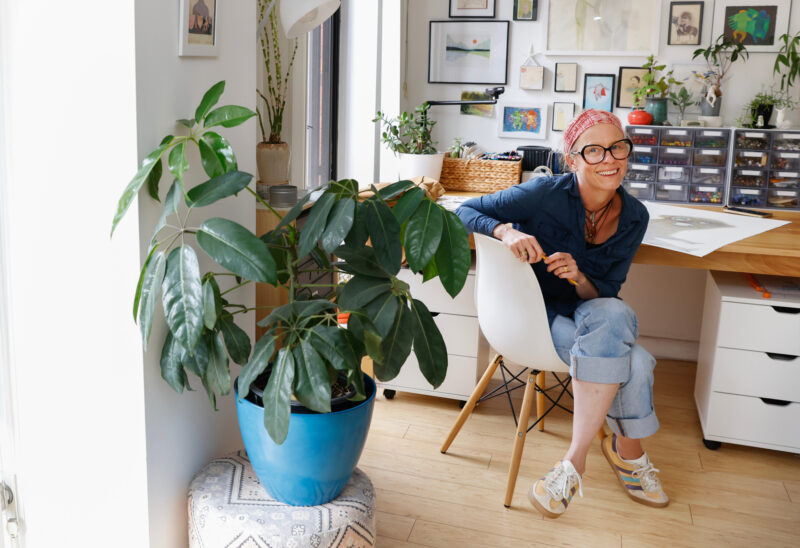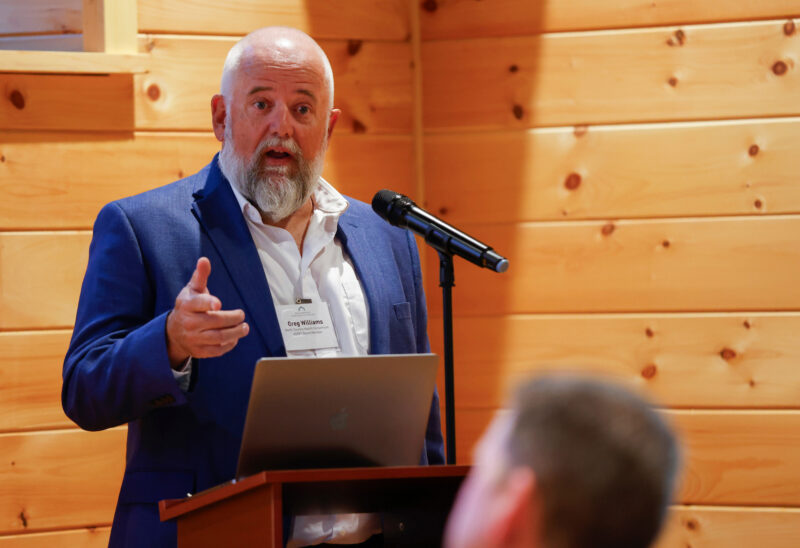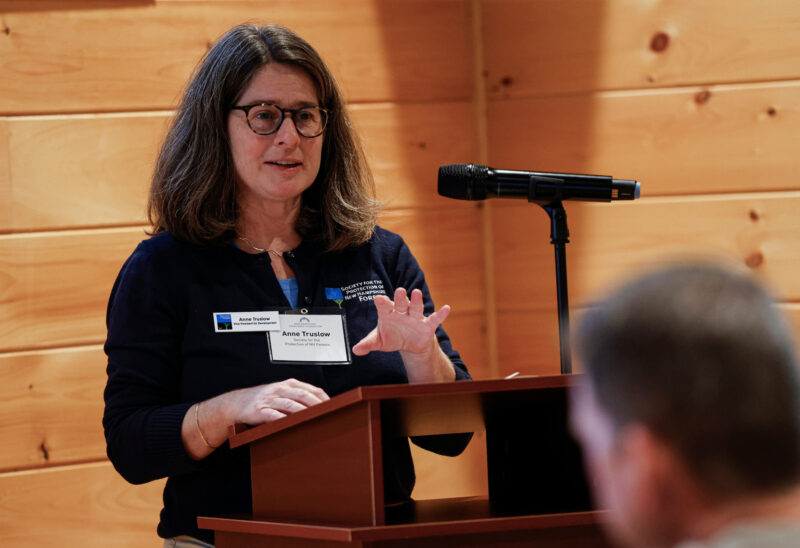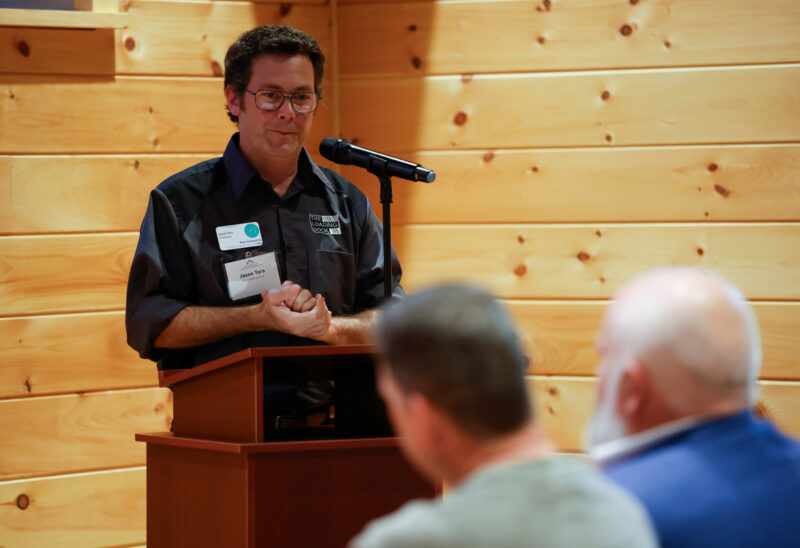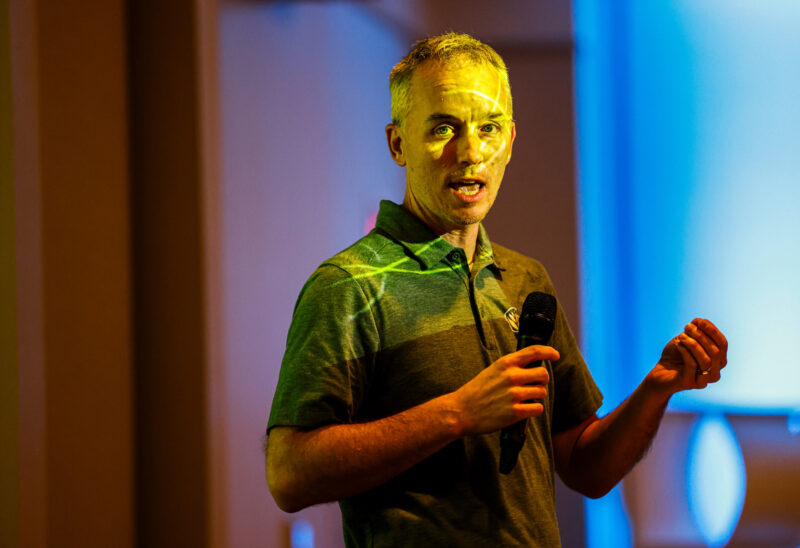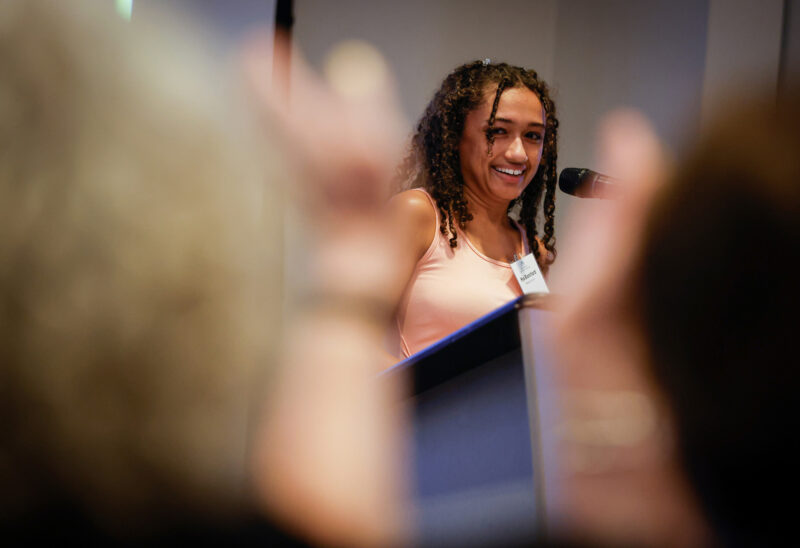Cathy McLaurin approaches art the way Ken Burns approaches documentary filmmaking: sleuthing through archives, searching for precious scraps that will breathe life into a narrative, sending letter after letter requesting information, recording hour upon hour upon hour of interviews. The process requires unblinking attention to a single (but complex) subject, can take years, and often raises as many questions as it resolves. The difference is that Burns knows that his finished piece will be a documentary film.
McLaurin’s finished piece could be almost anything: an installation with video, combined with copies of letters, perhaps a marionette, an animation, photographs. It’s not the kind of art that lends itself to gallery sales or elevator speeches. Weary, or pressed for time, she sometimes just says “I make sculpture.”
McLaurin, of Danville, was in the middle of such a project (and was at work at one of her two jobs) when she got the call that she had been awarded the 2017 Piscataqua Region Artist Advancement Grant from the New Hampshire Charitable Foundation. She had applied twice before, and was a finalist in 2016.
She is not someone who usually cries. She cried.
“It’s this incredible validation of all this work that we’re doing,” she said. “People have decided that they believe in what you are doing, and it needs to be done, and they want to invest in it.”
Fifteen years of supporting Seacoast artists
The annual grant has been validating and investing in the work of local artists for 15 years.
In 2001, a group of people on New Hampshire’s Seacoast decided to do something to help cultivate the region’s arts community, boost artists’ careers and help keep them living and working in the area. They recognized the effect of the arts to create desirable communities, help drive tourism and the creative economy, spark creativity and empathy and generally improve quality of life.
They created the Piscataqua Region Artist Advancement Initiative Fund at the New Hampshire Charitable Foundation — which makes a $25,000 grant to an individual artist in the region every year. It is one of the largest unrestricted grants to an artist anywhere in the United States. The first grant was made in 2002.
“It was incredibly forward-thinking, generous and inspired,” said Dick Ober, Charitable Foundation president and CEO. “And I think the effect has been to not only make a statement that art matters and that the work of artists is valued, but also to keep those artists around, which makes our communities more vibrant, which in turn attracts people who want to live and work here.”
“It says that culture is valued and that aesthetics are important and creativity is important and invention is important,” said painter Gail Spaien, who received the grant in 2010. “I feel very grateful to the people who decided to do it, and that it keeps going.”
The grant has been transformative for many recipients — helping them not only to make an incredible array of art, but to build studio space, create materials to more effectively market their work, and help attract attention and additional funding for their work.
The grant, said Lauren Gillette, the 2014 recipient, “allows people to swing for the fences” — creating work that they had envisioned but that had been financially out of reach.
She said the application process alone “forces artists to think about their intent and really be very thoughtful and decide what they’re going to do in the bigger picture.”
Carly Glovinski, who was awarded the grant last year, said the award helps keeps artists on the Seacoast. “It is one of the benefits to being in this area,” Glovinski said. “I think opportunities like that are what help artists decide” to stay.
The Museum of Art at the University of New Hampshire in Durham is mounting a retrospective of the work of the artists who have received the grant, from October 26-December 15.
The title: “Impact.”
“Fifteen years of making an investment like that is impactful — and I really do see it as an investment in the cultural sustainability of the region,” said museum director (and past AAG jurist) Kristina Durocher. “We’re very fortunate that these artists have decided to remain in this region. Investing in artists makes this region more desirable and attractive for people to stay here.”
Durocher said the unrestricted nature of the grant is “very unusual, and artists in this area are extremely lucky that people in the community have come together to fund this, and that artists are valued so much.”
For McLaurin, who has taught at the New Hampshire Institute for Art and mentored young artists in Art All State program at the Currier Museum of Art, the Artist Advancement Grant is part of what makes the region a great place to be an artist.
Living in the Seacoast area she said, “means that there are opportunities nearby to see challenging art and to engage with other artists.” And when she needs clarity, she drives along the coast. “That’s where I go when I need to work something out — layers of wool peel away with the waves.”
A preacher, a Monet, a legal struggle and an artist’s imagination
In addition to being a working artist, McLaurin works as a gallery director at the Essex Arts Center in Lawrence. The project that had captured her interest, and in which she had already invested years of research when she got the grant, was this:
Once upon a time, there was a reverend who loved nothing more than to spend a day reading, in a rowboat on a river. The Rev. William Wolcott was born in the mid-1800s in Lawrence — then a booming mill town and up-and-coming cultural center. He had a brother who collected art, and when that brother died, he left the reverend 17 paintings — including one by Claude Monet and another by Camille Pissarro. The reverend, in turn, bequeathed them to a local philanthropic fund in order to “create and gratify a taste for fine arts, particularly among the citizens of Lawrence.” The bequeath came with the stipulation that the paintings be loaned to the Museum of Fine Arts in Boston to be exhibited there until such time as a museum was built in Lawrence. (Which, at the time, seemed both imminent and inevitable.)
"I think there is value in digging deep into very complicated and complex narratives. I’m very comfortable with grey area."— Cathy McLaurinTweet This
That was more than a century ago. Lawrence still has no such museum. The paintings have spent most of the intervening years in storage in the basement of the MFA, McLaurin said. There have been moves to sell the paintings to fund other arts programs in Lawrence, sparking a lawsuit, much passion and high contention. There is no clear good guy and there is no clear bad guy in the disagreement over the paintings.
But also no museum for Lawrence.
“I think there is value in digging deep into very complicated and complex narratives,” McLaurin said. “I’m very comfortable with grey area.”
From her interviews, she has created a piece that shows people who have been involved with the fraught history of the paintings, talking on video monitors, around a conference table. And she has created an animation of the MFA basement, which she calls “Lawrence’s Museum,” and a photo piece entitled “A Deathless Contract,” both of which will be on display at the Museum of Art retrospective at UNH.
But she had something else in mind, something that would tell the larger story, would engage people in compelling questions about art, and the value of it (and whose values, anyway? And who gets to decide?), and community, and immigration, and outsourcing — and that “would require a budget that I didn’t have.” Now she has that budget.
She had received a grant from the Ella Lyman Cabot Trust for the project, and a portion of the Artist Advancement Grant will see it to completion.
McLaurin is creating a museum for Lawrence.
Each of the 17 paintings in Wolcott’s collection is being painstakingly reproduced in miniature, at a factory in China, with frames being carved in Bulgaria (outsourcing, as Lawrence’s once-booming industries were outsourced). And she is building a miniature church structure, about the size of an elephant, with museum wings off either side of the sanctuary to house the reproduced paintings. She has created a marionette of the Rev. Wolcott, which will enter the sanctuary and deliver a sermon about art.
The installation will be able to be folded up and carted around to be displayed in Lawrence (to introduce the people of that city to their paintings — of which, of course, most have never heard) and around New England and beyond.
The Artist Advancement Grant is helping McLaurin afford to take time away from paid work to complete the installation. “What I really need is time,” she said. “Now, I can make it the way I want to make it.”
She will also make some improvements (including adding heat) to her studio space, which is now an unheated garret over her Danville garage, further develop her website and create other professional materials.
McLaurin embarks on that work buoyed by “a kind of recognition that is hard to comprehend.”

